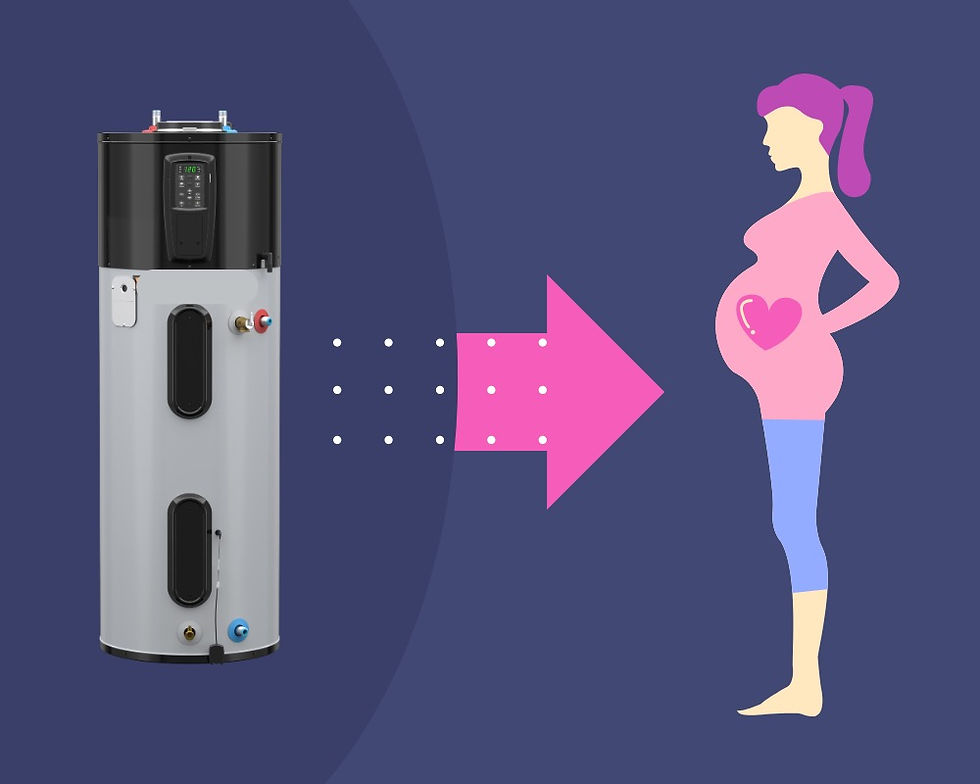Electrification Journey
- KJ Janowski
- Sep 12
- 5 min read
Updated: Oct 28
KJ Janowski, Los Altos
Our home
We purchased our four-bedroom, three-bath house near downtown Los Altos in 1994 and renovated and added on to it in 2000 and 2005. It now comprises 2750 square feet of conditioned space. During our 2005 renovation, we upgraded the master electric panel to 200 amps. So, we had plenty of capacity for all our electrification efforts.
As of January 2025, our home and our motor vehicles are fully electric. Our main motivation for removing fossil fuels from our transportation and our home was environmental. Methane gas can trap 80 times as much heat in the atmosphere as do carbon dioxide emissions. So, combusting “natural” (i.e. methane) gas in our home meant we were contributing unnecessarily to global warming. And since we were getting 100% clean electricity from Silicon Valley Clean Energy, none of the electricity that we would substitute would be coming from burning fossil fuels. We also had concerns about the health and safety impacts of burning gas for cooking and other uses.
The start of the journey
The first gas appliance that we replaced with electric was our clothes dryer in May 2008 after an appliance failure. I had a duct cleaning service over once and was alarmed when the service technician showed me the flames in the back of the gas dryer! This did not seem safe to me!
Electrifying our rides
In 2017, we got our first fully electric vehicle, a Chevrolet Bolt EV, and installed a 30 amp ChargePoint charger. Then in 2022, we replaced our gasoline-powered car with a Chevrolet Bolt EUV. Our ChargePoint charger synchronizes with our electric rate schedule and ensures that we charge during off-peak hours. (Of course, if we ever really needed to charge during peak hours, it is easy to override that.) Given our miles driven and the kWh/mile of each of our cars, we estimate that the cost of EV charging in 2024 (under our E-TOU-C rate plan) was about $1800.
The switch to clean and responsive induction cooking

In May 2021, we began taking additional steps to electrify our home, replacing our Thermador gas cooktop. We splurged and got a 36” Wolf induction cooktop and replaced the downdraft ventilation system.
Cost: $5,696 (of which $2,417 was the new ventilation system)
Rebates: BayREN rebate of $250
Tax credits: none
We love this cooktop because it is more responsive than gas, heats up very quickly, is much easier to clean and safer than cooking over flames. We never smell gas in the house. Since the cooktop is on an island in our kitchen, the sleek, smooth induction cooktop surface essentially expands our counter space. So, for example, we can use it to serve dishes buffet style.
Comfortable, clean heat pump HVAC

In June 2022, we replaced our gas furnace with a heat pump HVAC system. We were able to use the existing ducts without modification or additional cost. The air handler for the heat pump fit in the attic crawl space where the gas furnace had been. The heat pump component of the system was installed on the west side of our home, where the solar inverter and master electric panel were already installed. Since a heat pump HVAC basically runs forwards and backwards, whole home air conditioning was automatically a part of the installation. We installed a 5-ton Mitsubishi with a MERV 16 whole house filtering system.
Cost: $19,533
Rebates: $3,000 TECH rebate
Tax credit: $500
We have found that the HVAC system heats our home much more evenly than the gas furnace. The gas furnace would come on and make some noise and blow warm air through the ducts. Then the house would cool down and the heat would kick on again. In winter the house stays much more consistently comfortable than with the gas furnace. As the climate continues to warm, we appreciate the comfort of whole house A/C during high heat events. (Previously we only had A/C in two bedrooms.) We also wanted the whole house filtration system so that we can have clean indoor air in the event of wildfire smoke.
The last gasp of gas - heat pump water heating

In January 2025, our final gas appliance was replaced when our gas water heater gave out. We replaced our 50 gallon gas water heater with a 66 gallon State ProLine XE heat pump water heater. We included a thermal mixer on the system. This means that the water can be heated to a higher temperature and then mixed with cold water, essentially expanding the delivered capacity of the water heater.
Cost: $5,758
Rebate: SVCE $2,000
Anticipated tax credit: 30% of $5,758 or $1,727
In July 2025, we had our gas meter removed and will be receiving a $500 rebate from Silicon Valley Clean Energy.
Our electric bill
In 2012, before we embarked on our electrification journey, we installed a relatively small rooftop solar system (2.96 kW). This was done as a prepaid lease for a total of $10,733. Since this was a lease, the system is actually owned by Sunrun. We are on a Net Energy Metering (NEM 1.0) rate schedule, which is no longer available. If we were to expand our rooftop solar, we would likely have to remove the existing system and install a new system as well as switch to the latest, less favorable NEM rate schedule. In 2024, the system generated a total of 3260 kWh.
We have been on a time-of-use rate plan since 1994. We have had several different electric rate plans since then. In recent years we transitioned from E6 time-of-use to E-TOU-C and, as of August 2025, we are on the E-ELEC rate. The biggest single consumers of electricity are our vehicles. Given the annual mileage of our two cars and the average miles/kWh (4.1-4.5), we estimate an annual cost (under E-TOU-C rates) to be about $1800/year. This cost will be reduced significantly with the new E-ELEC rate, since the off-peak price/kWh will be 22-26% lower than under E-TOU-C. Winter peak rates under E-ELEC, when we might be heating the house, will be 23% lower under the new E-ELEC rates.
Annual electricity cost in 2019: $745.62
Annual gas cost in 2019: $883.94
Annual electricity cost in 2024 (all electric except water heater): $3,624 (usage from the grid: 8440 kWh)
Annual gas cost in 2024 (water heater was the only gas appliance): $334
We feel good about not combusting fossil fuels in our home or transportation. Increased comfort and safety are bonus effects! We look forward to the expected reductions in our electric bill under the new E-ELEC rate plan. If we were planning to be in our home for another decade or two, we might consider replacing our undersized rooftop solar system with a larger one and exploring battery storage.
Date | Appliance | Cost | Rebate | Tax Credit | Net Cost |
May 2021 | Wolf 36” Induction Cooktop and new downdraft ventilation system | $5,696 | $250 | $0 | $5,446 |
June 2022 | Mitsubishi heat pump HVAC 5-ton | $19,533 | $3,000 | $500 | $16,033 |
January 2025 | State ProLine XE 66 gal. heat pump water heater | $5,758 | $2,000 | $1,727 | $2,031 |
Gas meter removal | $500 | -$500 | |||
Totals | $30.987 | $5,750 | $2,227 | $23,010 |




Comments